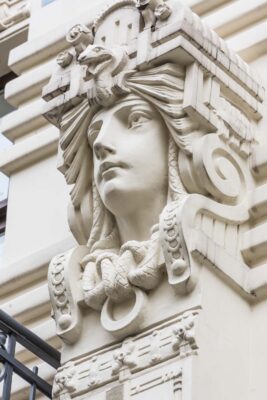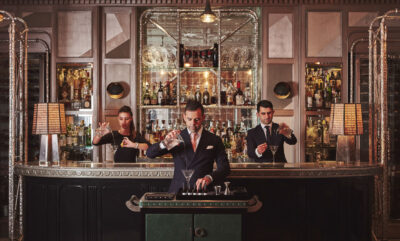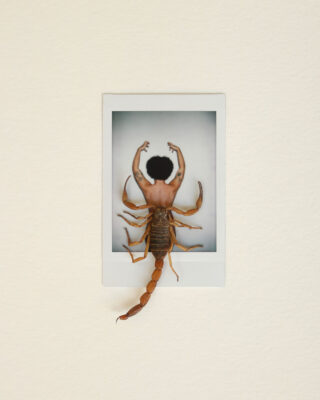
Fashion
Agent Provocateur
“Thierry Mugler: Couturissime” makes its grand finale at the Brooklyn Museum.
Of all of fashion’s great provocateurs, Thierry Mugler is arguably the most daring—but as the traveling exhibition Thierry Mugler: Couturissime proves, there is so much more to the late French designer than an affinity for cheeky cutouts and bondage wear.
Conceived by the Montreal Museum of Fine Arts, the exhibition has traveled from Canada in 2019 to Germany, the Netherlands, and France, drawing more than one million visitors. From November 18, 2022 to May 7, 2023, the retrospective makes its final stop at the Brooklyn Museum, where it has been expanded upon in homage to New York, a city whose energy and diversity fueled Mugler’s creativity during his 15-plus years living there in the late 1970s through 1980s.
“The most important thing in [Mugler’s] fashion is the humanist approach because it was really about the movements of society, and also about diversity,” the exhibition’s curator, Thierry-Maxime Loriot, said at the Brooklyn Museum press preview on November 15. This final opening was particularly “emotional” for Loriot, as it was the first venue where Mugler himself could not be present (the designer died in January 2022 at the age of 73 from “natural causes.”)
Mugler would, no doubt, be proud to see that the exhibition not only preaches his legacy as a couturier, but also a gifted costume designer, scenographer, photographer, and fragrance creator. In fact, the exhibition’s New York iteration features a new gallery with two fragrance rooms, one dedicated fully to Angel, the internationally best-selling scent, which celebrates its 30th anniversary this year.
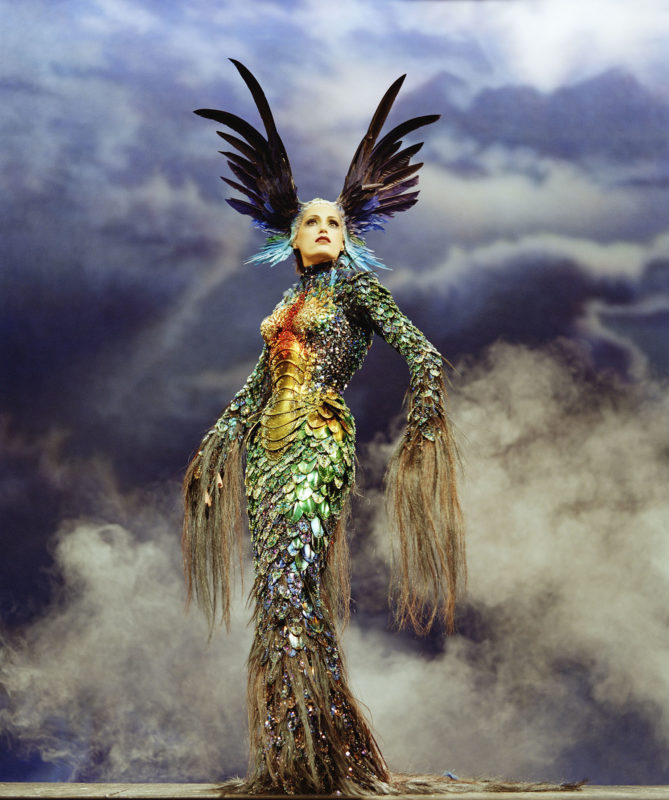
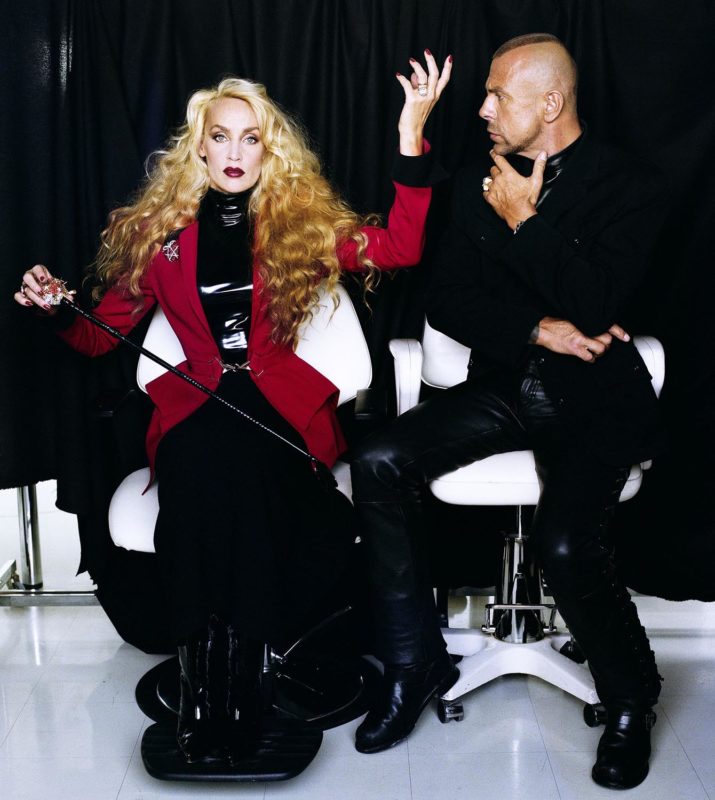
But rather than being overly nostalgic, the exhibition aims to be “future-forward,” says Loriot, emphasizing the trailblazing designer’s timelessness and innovation. It’s these qualities that make archival Mugler ensembles a favorite of today’s celebrities seeking show-stopping looks. As Tracee Ellis Ross, Diana Ross’ daughter and at one point a model for Mugler, put it: “He was a true dreamer…he designed for a future where women were in charge and on top.”
“Beyoncé went to see The Met’s ‘Superheroes: Fashion and Fantasy’ exhibition in 2008, and she saw Mugler for the first time. She then asked him to design her ‘I Am… Sasha Fierce’ tour,” Matthew Yokobosky, the Brooklyn Museum’s Senior Curator of Fashion and Material Culture, tells Digital Party. Included in the exhibition is the sinuous black and pink “Venus” dress from Mugler’s fall/winter 1995-96 ready-to-wear collection, a standout look worn by Cardi B at the 2019 Grammy Awards.
“In the Instagram age, if a new couture collection comes out, it can disappear in two to three months because everyone’s already worn it,” says Yokobosky who helped coordinate the exhibition. “So if you’re a celebrity, and you’re able to go back into an archive like Thierry Mugler’s, which maybe hasn’t been on view in a while, then it creates some excitement again because they’re so unique. He didn’t design things that were part of a trend. He made robots, rhinestone cowgirls, and motorcycle ladies—things no one else made before.”


The designer, who once proclaimed “my only true vocation is the stage,” was a proponent of the fashion-as-spectacle approach, paving the way for Alexander McQueen and other revered artistic icons embraced by museums. It’s therefore surprising that “Thierry Mugler: Couturissime” was the designer’s first retrospective. Moreover, unlike many contemporary exhibitions, including “Christian Dior: Designer of Dreams” blockbuster, which traveled to the Brooklyn Museum in 2021-2022, the Mugler exhibition is not commercially supported by the brand itself nor L’Oréal, which owns the Mugler archive.
Nevertheless, “Thierry Mugler: Couturissime” packs just as much of a punch as its commercial counterparts, and the outfits, of which more than 100 are on display, speak for themselves. The show begins with a knockout three-dimensional video, designed by multidisciplinary artist Michel Lemieux, in which a scene inspired by Macbeth resurrects the costumes (now too fragile to be displayed) that Mugler designed for a new staging of the Shakespearean tragedy in 1985. At the time, he was given the biggest budget in the history of the Comédie-Française since its founding in 1680.
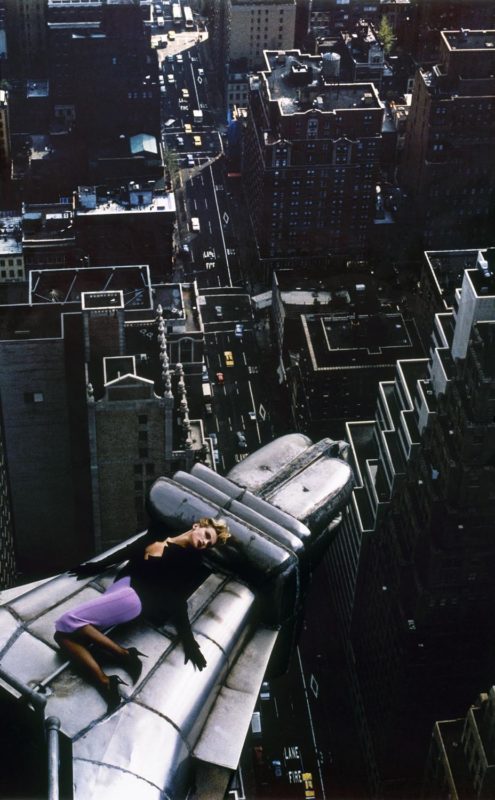
In the following galleries, garments transform from Mugler’s black and white “glamazon” creations of the 1960s and 1970s, which dared to defy the prevailing hippie aesthetic, to full-fledged sequined and bejeweled cabaret ensembles. Yokobosky likens the exhibition’s chromatic journey to “watching the movie Irene or The Wizard of Oz.”
A gallery showcasing decades worth of Helmut Newton’s sensual photography of Mugler’s fashions sets the tone for the bevy of corsets, lace, leather, and vinyl garments to come. As the designer once said, “the body is beautiful. It’s as simple as that. And for a fashion designer, it’s the base. I mean, I think a pair of breasts is so gorgeous and I just can’t resist when they’re pushed up like this—you know? It’s so seductive. It’s very sexual.”
The 1980s and 1990s sections reach a crescendo with “fembot” fashion and automobile-inspired pieces composed of tires, seatbelts, and radiator grilles, set against a grand corrugated metal backdrop. From this colder, futuristic environment, the visitor transitions into a heaven of sorts, where an ethereal Mugler angel is suspended off the ground, and is surrounded by Angel bottles and advertisements—the first of which was shot in New York.
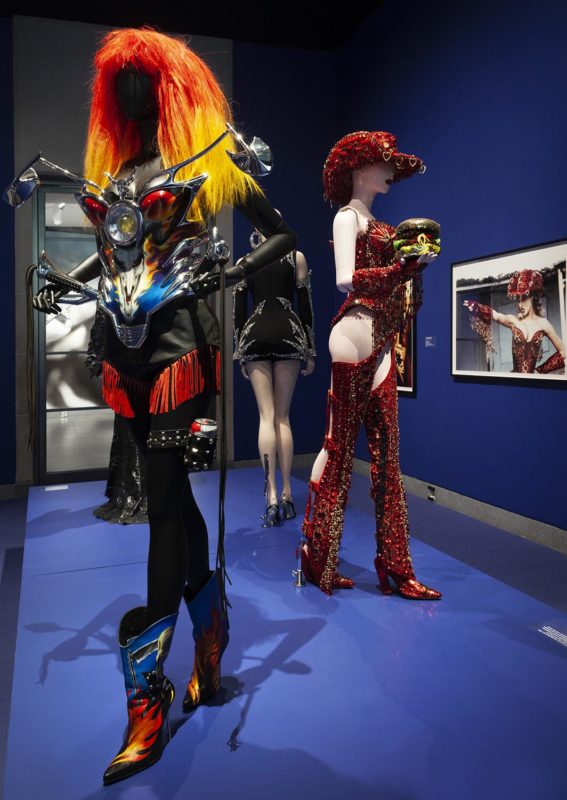
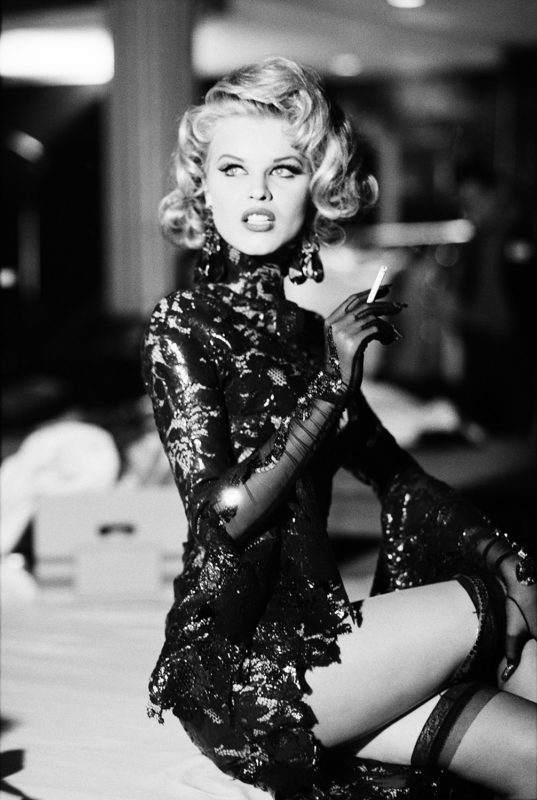
Along the way, nostalgia will inevitably ensue in a small gallery where George Michael’s 1992 hit “Too Funky” is blasting while the iconic video, showcasing 90s supermodels including Cindy Crawford and Naomi Campbell clad in Mugler, plays. The final exhibition room contains Mugler’s enchanting creatures of the sea and land, scaled and feathered, armored like reptiles and fragile like butterflies. “I don’t know what normal means,” he once told Interview magazine. “I think nature is endless and beautiful, so I try to occupy nature and never contradict it.”
Testament to Mugler’s brilliance, which garnered endless support from creative communities, images of celebrities (Madonna, David Bowie, Céline Dion) taken by an encyclopedic list of the world’s most preeminent fashion photographers are ubiquitous throughout the exhibition. Beyond Helmut Newton, there are shots by Guy Bourdin, David LaChapelle, Mario Testino, Bruce Weber, Herb Ritts, among countless others. It’s Mugler’s own striking photography, shot in far-reaching locales from Russia the Sahara, that puts into perspective how extraordinary his eye was. “It wasn’t just about designing a dress or a gown. It was about what it would look like in its next incarnation, the photograph,” says Yokobosky. “Thierry Mugler was truly a creator of images.”
Thierry Mugler: Couturissime runs from November 18, 2022 to May 7, 2023 at the Brooklyn Museum. Get tickets here.
Hero image: Manfred Thierry Mugler in Montreal, 2018. © Max Abadian
